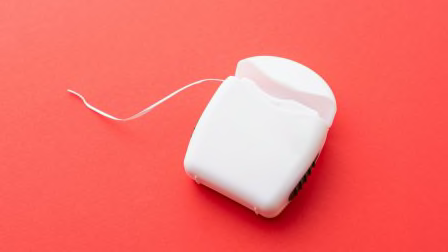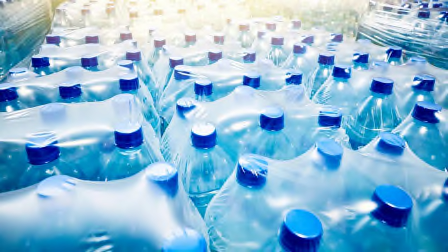New Report Underscores the Risks of Lead in Water, Especially to Bottle-Fed Babies
Black infants are particularly vulnerable. Here's how consumers can protect themselves and their families.

Not long after Peter and Erica Finin moved from Michigan to Pittsburgh, they had the tap water in their new home tested for lead. It was 2017, and “the whole [lead] situation in Flint was very much in the news,” Peter says. They’d been thinking about starting a family and wanted to be safe.
In searching for testing options, Peter came across a program offered by Healthy Babies Bright Futures (HBBF), a nonprofit alliance of scientists and child health advocacy groups, and Virginia Tech.
Test results showed they had a serious lead problem, with levels high enough to potentially harm children and infants. “It made it clear we needed to get a filter,” Peter says.


Lead in drinking water remains a critical issue in the U.S., despite attention brought by the crises in Flint and other cities, says Jane Houlihan, research director for HBBF. “There's no amount of lead that’s safe,” she says, adding that children “have one chance to develop a healthy brain, and lead erodes that chance.”
Consumer Reports has long been concerned about lead exposure, particularly its effects on children, whose brains and bodies are still developing.
“This report underscores CR’s previous research showing potentially harmful levels of lead in some foods and drinks babies and toddlers consume,” says James E. Rogers, PhD, director of CR’s food-safety research and testing. “It’s critical that the government and industry address this public-health challenge immediately.”
A Potent Neurotoxin
Lead is ubiquitous, found in some soil, toys, and ceramics as well as paint in houses built before 1978, when lead paint was banned.
But drinking water is a major source. While lead pipes were outlawed in 1986, the Environmental Protection Agency estimates that 6 to 10 million homes still get water through service lines that predate the ban. Lead can also come from the water supply itself or from a house’s plumbing, faucets, or fixtures.

“A bottle-fed baby is the family member at greatest risk because they drink a far greater volume of water per pound of body weight than older children or adults.”
Research director, Healthy Babies Bright Futures
Ingesting even small amounts of lead over time can lead to lasting health problems because it accumulates in the body, says Mona Hanna-Attisha, a pediatrician and associate professor at the Michigan State University College of Human Medicine, who first publicized the issue of elevated blood levels in children in Flint, Mich., but wasn't involved in the HBBF study. Those problems include reduced IQ and academic performance, as well as attention deficit disorder and behavior problems.
But while lead exposure can be dangerous for anyone, it’s especially concerning for infants fed powdered formula that’s mixed with tap water. “If the water in the home has high levels of lead, a bottle-fed baby is the family member at greatest risk because they drink a far greater volume of water per pound of body weight than older children or adults,” Houlihan says.
“That’s what kept me up the most at night in Flint,” where breastfeeding rates are low, Hanna-Attisha says. The first 4 to 6 months, when infants consume nothing but breastmilk or formula, is key to neurodevelopmental growth. “Lead is a potent, irreversible neurotoxin. No matter what you do, it’s impossible to get rid of a child’s lead exposure if it’s there.”
Because pediatricians generally don’t screen infants for lead until they're a year old, and water at home isn’t necessarily tested for lead, relatively little is known about the extent of lead exposure in these first vulnerable months of life, according to Hanna-Attisha.
“It’s terrible to think we have not addressed this,” she says.
The new HBBF study helps quantify that harm, because it includes a risk analysis showing how lead in these first months could cause lifetime IQ point loss for babies who only consume formula.
According to the Centers for Disease Control and Prevention's 2020 Breastfeeding Report Card, just 26 percent of babies in the U.S. are exclusively breastfed through 6 months of age. That means most infants drink at least some formula during their first months of life. And U.S. retail sales of powdered formula, which is usually less expensive than liquid, are estimated to be more than 10 times greater than those for the liquid form.
Widespread Contamination
The homes in the HBBF-Virginia Tech study were in 343 cities and towns in 46 states, and were built between 1840 and 2019.
Despite the countrywide distribution, the study isn't nationally representative. Participants wanted to have their lead levels checked, many because they had reason to think their water could be contaminated. Still, Houlihan says, “I was surprised lead was detected in so many homes.”
Only 21 percent had no detectable amounts of lead in the water. While older homes were slightly more likely to have lead, 70 percent of those built after 2000 still had some.
In nearly 40 percent of the homes, at least one sample exceeded 1 part per billion (ppb), the AAP’s recommended limit for drinking water in schools. Nearly 15 percent had at least one sample above 3.9 ppb, which the report’s risk assessment found is linked to a 0.5 IQ point loss. That may be enough to blunt lifetime earnings by 1 percent or more for infants who only consume formula made with tap water, according to HBBF’s assessment.
Those figures don’t include results from 97 homes in New Orleans that were part of HBBF’s test. New Orleans has a long history of lead in tap water, Houlihan says, which explains why so many families there were interested in testing. Seventy-one percent of the homes tested above 1 pbb, 22 percent above 3.9 ppb, and 4 percent above 10 ppb. Only 5 percent had no lead in the water.
Special Risks to Black Infants
Black infants may be at higher risk from lead in tap water, according to HBBF’s report. That’s primarily because they’re more likely to be formula-fed. Twenty-six percent of Black infants are never breastfed, compared with 16 percent of Hispanic babies, 13 percent of non-Hispanic white infants, and 10 percent of Asian babies, CDC figures show.

“Black children have a disadvantage before they even arrive.”
Founder of Birthing Beautiful Communities in Cleveland.
Overall, Black children are more likely to be exposed to lead, worsening inequities from birth.
“Black children have a disadvantage before they even arrive," says Christin Farmer, the founder of Birthing Beautiful Communities, a group that provides childbirth and parenting education to Black women in Cleveland. She says that maps of the city showing financially stressed and disadvantaged neighborhoods overlap with maps showing high levels of lead poisoning.
Poorer families face greater hurdles fixing the problem, too, because homeowners are often required to pay at least part of the cost of replacing the pipes, and in many cases they don’t own the properties anyway, Hanna-Attisha says.
But getting rid of lead in water would save money in the long run, according to a report by the Robert Wood Johnson Foundation and Pew Charitable Trusts. It found that removing lead drinking water service lines going into the homes of children born in 2018 would protect more than 350,000 of them and yield $2.7 billion in future benefits—more than the estimated cost to replace the lines.
Fixing the Problem
Houlihan, Hanna-Attisha, and other experts say that the EPA’s actionable limits on lead are too high to be safe, and that the laws regulating the use of lead are too weak.
The EPA says that for health purposes, the lead level in drinking water should be zero. While water utilities are required to take steps to prevent contamination by lead and other heavy metals, they must take greater action—notably replacing lead service lines—only if 10 percent of samples taken from homes test above 15 ppb.
“The federal standard for lead wasn't set based on protecting children's health, it was set based on cost and feasibility,” Houlihan says.
When asked about the discrepancy between its action level and health recommendations, the EPA tells CR that the action level isn’t meant to establish a safe level of lead, but is instead supposed to measure the effectiveness of corrosion control in water systems.

“Once again we are passing the buck, once again we are silently poisoning a new generation of children.”
Pediatrician and associate professor at Michigan State University College of Human Medicine.
What’s more, water utilities often game the system, sampling in ways that ensure that no more than 10 percent of homes exceed the limits, Hanna-Attisha says. Even when cities must replace lead lines, recent changes in federal rules have slowed the process, allowing them to replace only 3 percent per year compared with 7 percent previously.
“Once again we are passing the buck, once again we are silently poisoning a new generation of children,” Hanna-Attisha says.
The EPA says its new rule provides a comprehensive approach to reducing lead in drinking water and disputes the idea that rule changes would slow lead pipe replacement. "Very few water systems have conducted lead service line replacement programs,” the agency says, noting that “most systems above the action level did not achieve 7 percent in any year,” because of loopholes in the current system.
While HBBF’s findings are worrisome, Houlihan emphasizes that parents don't need to panic. And she notes that while there are no safe lead levels, the threat of lead shouldn’t stop parents from feeding their babies in whatever way works best for them, whether by bottle or breastfeeding. For bottle-fed babies, there are steps parents can take to lower their children’s exposure to lead in drinking water, she says.
Some water utilities offer water testing for free, and HBBF offers discounted testing.
If you are concerned about your results, using a water filter is easy and affordable. Look for one that’s NSF/ANSI 53 certified to remove total lead. This could be a pour-through pitcher or a filter that attaches to your faucet. You can also get a NSF/ANSI 58 certified reverse osmosis filter that attaches to your plumbing.
Ana Cook, who lives in a Milwaukee suburb, took that step after discovering high levels of lead in her water when she was pregnant. “I immediately stopped drinking the water at our house,” she says, until the filter was installed.
You should also unscrew and rinse out the “aerator,” a small screen at the end of a faucet, every few months, Hanna-Attisha says, because lead particles from corroded pipes can get trapped there.
The EPA also recommends flushing your water lines for 45 seconds before drinking water to clear out water that’s been stagnant in the line. And always using cold water for drinking, cooking, and baby formula because hot water can cause metals to leach from pipes.
“I think it's problematic that so many infants and children are being exposed to lead and there is nothing substantial being done,” Cook says. She and her family have since moved to another home in the Milwaukee area. One of the first things they did was install another reverse osmosis system. “We didn’t even test the water this time,” she says.
Consumer Reports has a long history of investigating America’s water. In 1974, we published a landmark three-part series (PDF) revealing that water purification systems in many communities had not kept pace with increasing levels of pollution and that many community water supplies might be contaminated. Our work helped lead to Congress enacting the Safe Drinking Water Act in December 1974.
More than 45 years later, America is still struggling with a dangerous divide between those who have access to safe and affordable drinking water and those who don’t. Communities of color often are affected disproportionately by this inequity. Consumer Reports remains committed to exposing the weaknesses in our country’s water system, including raising questions about Americans’ reliance on bottled water as an alternative—and the safety and sustainability implications of this dependence.
In addition to our ongoing investigations into bottled water, we are proud to be partnering with our readers and those of the Guardian US, another institution dedicated to journalism in the public interest, to test for dangerous contaminants in tap water samples from more than 100 communities around the country. The Guardian and CR will also be publishing related content from Ensia, a nonprofit newsroom focused on environmental issues and solutions.
America’s Water Crisis is the name we are jointly giving to this project and the series of articles we co-publish on the major challenges many in the U.S. face getting access to safe, clean, and affordable water. We will share the results of our upcoming test findings with you. In the meantime, you can join our social media conversation around water under the hashtag #waterincrisis.
Chief Content Officer, Consumer Reports




















